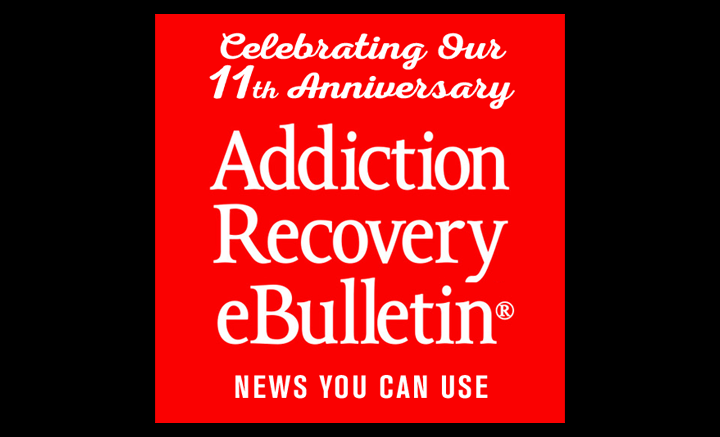by Christopher Dale
With COVID-19 waning, a spirituality-based argument for abandoning online meetings.
“I’m in,” I said excitedly, reacting to the best recovery-related news I’d heard in over a year. Our AA retreat was on as scheduled. And it was, at long last … in-person.
AA meetings in my home area of northern New Jersey, I’m sure, will soon follow, as will those in many other states. Even the COVID-conservative California has set a target date, June 15, for fully reopening to gatherings of all sizes and circumstances.
For AA groups across the country and around the world, a critical debate looms. As vaccination rates rise and the COVID-19 crisis gradually wanes, AA finds itself at a crossroads unlike any other in its history. The big question: with in-person meetings reopening, will we retire Zoom rooms or keep the online format indefinitely? Is AA going permanent hybrid, or returning solely to our pre-pandemic, IRL (in real life) roots?
The pro-Zoom crowd will point to the technology’s vital role in keeping AA going during a once-a-century contagion. Accurately, they will discuss how groups everywhere nimbly pivoted to an online format that, at first, many feared wouldn’t work. But despite some glitchy growing pains, Zoom rooms soon became as normal an experience as possible given the highly unusual circumstances. With commendable diligence, a bunch of former problem drinkers had effectively made lemonade from lemons.
And now, they will argue, why not continue with it? Given the convenience and geographic agnosticism inherent to online meetings, why not take those benefits and run with them? In a society seemingly driven by “you do you,” why shouldn’t recovering alcoholics have as many choices as possible?
To that, in-person traditionalists, including me, must resist the temptation to kindly, gently espouse our dearly held belief that Zoom rooms suck ass, big time. No, all abundantly apparent cyber-shittiness aside, we must be equipped with more lucid, preferably less profane persuasion.
For starters, many facets of the anti-Zoom argument are obvious. Clunky, cut-off dialogue and microphone feedback. Unattainable eye contact and anonymity concerns. Control given nearly entirely to switchboard moderators, empowered with muting and calling on invisibly raised hands as they please. And for God’s sake, no coffee, cake or group smoke breaks.
But while true, those detriments are well known. A more pressing reason to move on from Zoom is the format’s near-total soullessness. Online meetings have all the spirituality of an office presentation.
Many of my AA fellows understand this – but, it seems, only subconsciously. Many know as sure as 2+2=4 that Zoom is lacking something profound, but can’t quite find the words to express why. So let’s attempt to solidify the spirituality-based argument for limiting Zoom rooms to what they were always intended to be: a temporary necessity rather than an indefinite solution, hybrid or otherwise.
For spirituality’s sake, it’s time to get our faces off our laptop screens and our asses back in church basement seats.
WWBWD? (What Would you-know-who Do?)
In a program as steeped in tradition and reverence for its founders as AA, our Hollywood Squares-esque Zoom meeting screens beg the all-important acronym: WWBWD? What, pray tell, would AA’s eloquent yet often cantankerous co-founder make of cyber sobriety’s variety show-style setup?
I sometimes wonder what another famous founder, George Washington, would think if he suddenly rematerialized and boarded an airplane. Undoubtedly, he’d be astounded, disoriented and – considering that people once thought speeds of over 50 mph would make a woman’s uterus fall out – more than a little concerned for any female passengers.
But more than anything, he’d be amazed at man’s technological accomplishments. “What marvels of modern science,” he would wonder, “gave man the gift of flight!?”
Encountering a Zoom meeting’s checkerboarded cast of characters, Bill W. wouldn’t be quite as astonished – after all, he lived until the early 1970s. But still… AA meetings held by people from their living rooms, on something called an “iPad?” For what reason?
Someone would, of course, explain that this screen-centric setup was something we had to do, because a virus as contagious and deadly as 1918’s Spanish Flu (which Bill would remember with the same trepidation as we do COVID-19) had forced us to suspend congregating in-person.
Undoubtedly, Bill would be impressed with, and grateful for, the technology. But unlike an airborne Washington, for Bill the novelty would soon wear off.
“No coffee-pouring or seat-saving? No hearty handshakes and welcoming hugs? No common ground-creating warnings against crosstalk and extraneous discussion? No Steps and Traditions posted on walls?”
Soon, I’m confident Bill W. would notice something else omitted – something that so many of us have found lacking over the year-plus-long Zoom rooms experiment. Someone as perceptive as Bill would soon realize that the missing ingredients were far more than physical.
“Where,” asks Bill, “is the spirituality?” In short order, WWBWD becomes another acronym: WTF. Not “What the f—?”, mind you, but “When the f—?” As in “When the fuck are you people going back to real AA meetings?”
Let’s be honest: We’ve all heard old-timers in AA wonder aloud what the founders would do when faced with one modern-day issue or another. For one, I’ll admit to rolling my eyes and wishing some folks would accept the fact that we’re far closer to 2035 than 1935. By incessantly theorizing and speculating about Bill and Bob’s intentions, well-meaning AA members have become the boys who cried Wilson. And that’s unfortunate.
But this is more important than some squabble du jour. With the pandemic finally winding down, whether or not to continue wide-scale Zoom meetings, even as doing so becomes less and less necessary, has far-ranging consequences. Continuing Zoom rooms indefinitely post-COVID would represent one of the most seismic paradigm shifts in the program’s near-century-long existence. That’s not something to be taken lightly.
If Zoom rooms become a permanent part of AA – if they are “new-normalized” rather than disbanded as short-term necessities – the effects will be far-reaching. For starters, with meetings bifurcated into online and in-person versions, attendance at each will be lighter, meaning less fresh faces and more “same old” stories from well-meaning yet long-winded regulars.
But as Bill would have seen as clear as his laptop screen, the more important consequence lies in the spiritual. Simply put, for a sizable swath of AA members, there is a spiritual essence at in-person meetings that cannot be replicated online.
I cannot quantify that italicized statement. There’s no spirituality meter to gauge, no surveys to link to, no studies to cite. But I know many of you reading this know exactly what I mean. And for those of you who don’t, with in-person meetings returning, I highly recommend seeing for yourselves.
Zoom vs. IRL: See for Yourself
With in-person meetings gradually returning, we can now conduct an experiment that was impossible just a few months ago: a side-by-side, cyber vs. IRL comparison. Get ready for the spirituality tAAste test.
The experiment is simple: Attend one of each kind of meeting with your sole focus on the spiritual aspects of the program. The goal is to determine the level of spirituality the meetings inspire in you.
First, the in-person meeting. As much as possible considering some pre-2020 rituals (such as handshakes) may still be on hold, recreate your pre-pandemic meeting routine. Take a seat, have some coffee, notice the room and its congregants.
Recognize someone you know, approach that person and remark on how truly wonderful it is to see them again in the flesh. Appreciate the pre-meeting din, and notice how it suddenly dissipates in a reverent hush when the meeting begins.
When a newcomer raises his hand and announces his day count, enjoy something you haven’t done in over a year: applaud in unison – in actual unison – with your fellow AA members. Say “Hi ——-” each time someone introduces themselves – again in unison.
Follow people’s eyes, which will invariably be affixed… on other people. Feel the togetherness for a common purpose – even if, for now, that togetherness comes in chairs spaced six feet apart.
Also notice what the in-person meetings doesn’t have. Is everyone on their phone? Does anyone suddenly vanish into a black hole, leaving others wondering whether they’ve left the meeting? Do you hear babies crying, dogs barking or other random nonsense?
No. Like a city slicker in a rustic country cabin, the utter lack of distraction is palpable and alluring. It’s an addition by subtraction that fosters engagement with the gathering’s primary purpose.
When the meeting closes, stand in that familiar circle – even though, again, your arms may not be linked just yet. Nonetheless, your fellows are here. They are flesh and blood just a few feet away.
Leave the meeting and consider this: A sizable factor in AA’s effectiveness – a reason it became the most prolific recovery program ever, by far – is that an AA meeting is greater than the sum of its parts. There is an intangible extra in the rooms that many, especially those who aren’t traditionally religious, consider indicative of a Higher Power. For many, myself included, stepping into a meeting means stepping into Step 2.
Did you feel that extra something in there? I’m going to bet you did. Because I do, and I’d bet my sobriety that Bill and Bob did, too.
Now go home, and log onto a Zoom meeting. With the same mindfulness, search for signs of the spirituality that I’m hoping, optimistically, you just experienced in-person.
Notice the reaction (or lack thereof) when a newcomer announces her day count, or an anniversary is celebrated. Follow people’s eyes, which are invariably affixed … on what exactly? Their camera? A noisy roommate? Candy Crush?
Speaking of distractions, what other screen windows do you have open? Facebook? Twitter? Work emails? If “none of the above,” will it remain that way for the entire hour, or will you invariably give into the addicting lure in the palm of your hand? In fact: have you ever gone a full Zoom meeting without giving into one cyber distraction or another? I know I haven’t.
Ask yourself whether participating in a 12-step meeting via an inherently distracting device is truly an attractive arrangement, or whether you’re only doing so out of necessity – or, as the COVID-era drags on, out of habit.
Now, feel for that something extra – that special sauce that made you a repeat customer to in-person AA before COVID ruined the recipe. Notice the near-total absence of body language, which social scientists say accounts for more than half of communication’s effectiveness. If the spiritual part of the program is, as the AA saying goes, “all of it,” is Zoom really making that grade?
If you honestly feel it, you have better recovery than me. Because all I feel is bored, uninspired and a bit guilty for resenting the entire enterprise.
But if you don’t feel it, then please: speak up. When the time comes for your home group to reopen in-person, voice your opinion that it does so in full force, without a half-assed cyber sidekick. Zoom has served its purpose, but was never intended to be permanent.
It is tempting to say “look, the technology worked! We successfully pivoted to Zoom meetings!” Yes, we did. But only because we had to. Now that we have a choice again, the choice is clear. Let’s leave Zoom where most of the past year belongs: in the rearview mirror.
The opinions expressed in this publication are those of the authors. They do not purport to reflect the opinions or views of the Addiction/Recovery eBulletin or its staff.


